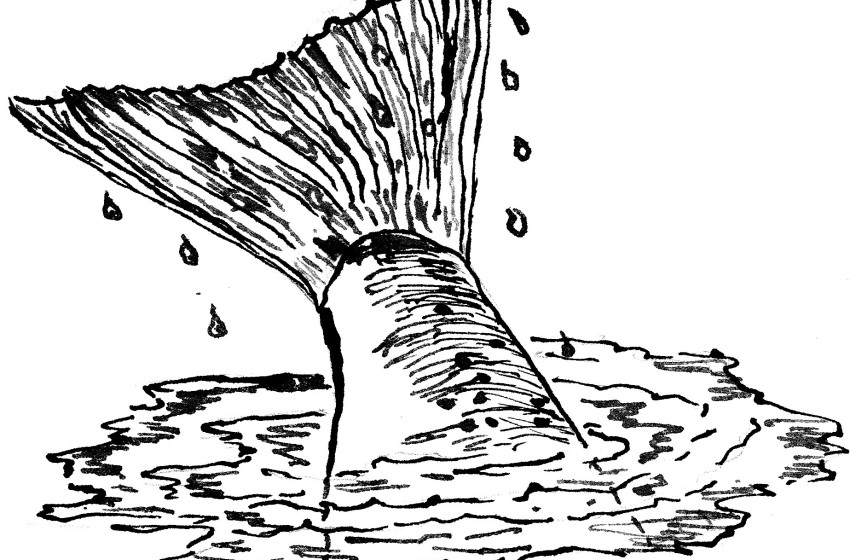Hugh Creasy's column August 2020
- 31/07/2020
- Richie Cosgrove

Winter flies are stored away – those big, fluffy things that imitate small fish and the eggs of spawning hens. A couple of balls of moth-killer in a plastic bag will preserve them until next year.
Spring brings promise of sunshine and evening rises of mayflies and caddis. There will be fish freshly recovered from spawning and fighting fit after feasting on whitebait and the riches the thaw in the tops brings down to the reaches and runs brightly flowing.
Size 8s are replaced by 16s, and the largest flies imitate mayflies and stoneflies and maybe a Dobson fly on a long-shanked 10.
When the waters are low Dobson fly larvae or toebiters can be captured and used for bait where it is legal. They last longer than worms on the hook, and cast into the heads of pools using a half-filled bubble float, they can be deadly. Just turn over a few large stones at the river’s edge and you will be surprised at how numerous they can be, this early in the season.
In the beech forests, mice will be breeding and feasting on seeds, and in a few weeks they will leave their nests, adolescents expelled by their parents to fend for themselves – easy prey for falcons and mustelids.
It is in the spring that we begin to realise the sheer quantity of insect life that a river holds. Smuts and sandflies cloud the evening air, pursued by swallows and fantails, then come the midges and their bloodworm larvae, followed by the prettiest of insects, the mayflies. Stoneflies hatch in darkness, and the papery husks of their hatching blow in the morning breezes. Caddis skate over the water, looking for solid ground to expand their wings and take to the air in mating dances. In the shallows backswimmers and water boatmen dart about, protecting tiny territories and preying on anything smaller than themselves.
The watery world is a savage place, survival relies on good fortune and skilled instincts. The weak rapidly become prey.
Freshwater crayfish scavenge the shallows, attracted by decaying flesh, and where the river nears the sea, shrimps prowl the shallows, busily grooming the stones.
Inanga come from the sea, and in areas of virgin forest they shoal in vast numbers. Galaxids form a vital part of the whitebait catch, and while trout feast on their plenitude, habitat loss is the main contributor to their falling numbers.
On any warm day in winter there are hatches of midges, but when the weather warms in spring they burst from the water in vast numbers, providing a feast for nesting birds and a dietary boost for fish recovering from the rigours of winter and the breeding season. Damsel flies and dragon flies hum over still water, almost miraculous in their aerobatic displays. Their nymphs are prodigious predators in the margins and shallows.
Rivers bloom with life, and the volume of insects signals the health of a river. Even those short-run flows from the Alps, fast though they are, carry terrestrials from the forests through which they flow, enough to grow fish of prodigious size, though not in great numbers. There is not enough holding water and pools to support great populations.
Into this cornucopia, comes the angler, eager to pit his wits against nature’s great survivalists. Equipped with everything humanity’s industrial prowess can provide, and with brains gigantically bigger than any of his prey he approaches the riverside, cogitating over a conundrum: what fly to use.
Observation will answer the question, but it takes time, and the angler, fuelled by accumulated adrenalin, rushes to the waterside and ties on a general pattern of fly or spinner that or may not work and flails the water in his efforts to attract a fish. It’s a bit like a pointing dog on opening day. It rushes about, running over good scent, blind to the obvious, until the adrenalin rush is spent and it settles down to serious hunting.
Luck often comes to the aid of the angler, and he or she indulges in self-congratulation at having conquered a beast of little brain. The super-fit will race through run and pool, casting as they go, sure-footed and blind to discomfort. We of advanced age and accumulated infirmity, advance at a slower pace. But a little patience and the use of reason will increase the odds in the angler’s favour.
Backwaters often show signs of overnight hatchings, with husks of insects floating in the scum that accumulates behind boulders, and brown trout especially will follow a beat as they circle a pool. View upstream for any disturbance that will signify a rise, especially in holding water behind boulders. On sunny days, fish cast shadows and on sandy bottoms, a moving shadow may signify a fish higher in the column of water. If you see a fish, stalk it, just as any predator stalks its prey. Use cover, lower your profile and don’t wave a rod around when a fish is swimming towards you. Often, if you remain completely still, a fish will pass within metres of you without being put down, but twitch a finger and it’s gone.
 Insects in the air may indicate what a trout will take. Even blowflies from a half-sunk animal carcase can attract a following, and with lambing and calving in full swing, blowies are numerous.
Insects in the air may indicate what a trout will take. Even blowflies from a half-sunk animal carcase can attract a following, and with lambing and calving in full swing, blowies are numerous.
Observation is everything. Angling is a skilled form of hunting and skill increases with practice.
We have the benefit of amazing equipment, from carbon fibre rods to polarizing sunglasses. Add to that an oversize brain and its a wonder there are any fish left in the rivers.